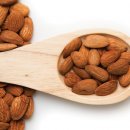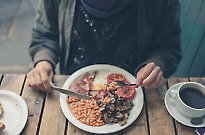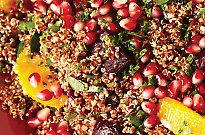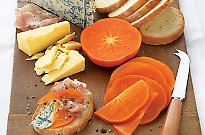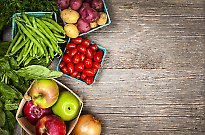
Top tips for weight loss the wholefood way
Top tips for weight loss the wholefood way

When it comes to losing weight, we need to look at ourselves as an individual and ascertain what is right for us. Sure, there is the concept of calories in calories out, but that certainly does not work for everyone. For some, cutting back on portion sizes and being conscious of what their meals are made up of is enough. For others, it’s not that easy. Here are the fundamental areas that we need to consider when aiming to shed some weight:
Wholefood vs. ‘empty foods’
A wholefood diet is filled with sustaining protein, fibre and fats that keep us fuller for longer and less likely to grab a quick ‘pick me up’ sugary snack. Wholefoods are in the majority lower in sugar, meaning there is less likelihood of excess sugar intake being turned to fat. This process happens when our sugar intake surpasses the capabilities of the body’s insulin levels, resulting in excess sugars shuttled off to our liver to be converted to fats (triglycerides). Additionally, fibre, protein and quality fats slow down the absorption of sugars meaning we are more likely to slowly burn the sugars/carbohydrates for energy rather than rapidly store them as fat. Conversely, foods devoid of nutrition termed above as ‘empty foods’ are generally high in sugars, low in fibre, protein and quality fats resulting in an abundant supply of sugars readily converted to fat.
Calories
Calories are part of the puzzle, but they are by no means the full picture. Sure, if we ignore calories all together and eat nothing but calorie-rich foods, such as raw desserts, we will certainly be pushing the calorie quota. However, if you are eating a wholefood diet balanced with protein, fat and an array of complex carbohydrates then it is very hard to consume ridiculous amounts of excess calories. Moreover, all calories are not the same. For instance, a Snickers bar or a homemade bliss ball may contain the same amount of calories. However, the Snickers bar is mostly made up of sugar, meaning rapid absorption and storage as fat. Whereas the bliss ball made of dried fruit, nuts, seeds and protein powder has a high amount of fibre, fats and protein to slow the absorption rate therefore discourage the storage response.
Portion size
Our Western culture has quite a distorted understanding of what a meal size should consist of. So many people overeat, which means our body is in a food surplus state. This also can apply to healthy food, a common misconception being that when you eat a wholefood diet you can eat ‘as much as you want’. Yes, wholefood is amazing, but it’s not magic. If you eat too much it has to be stored somewhere.
Healthy you, healthy weight loss
Commonly there are other contributing factors to weight loss. I see examples in the clinic consistently where having a healthy gut allows the metabolism to function effectively, finally allowing a person to shift some frustrating weight. Fat is stored energy, and your body does not want to lose that stored energy when it is compromised and deficient. Other common health concerns that can affect inability to shift weight are thyroid irregularities and hormonal imbalances whether they are reproductive hormones or adrenal hormones.
So, what does a healthy weight loss food plan look like?
First and foremost it must be based on a wholefood, macronutrient balanced diet. From there we can create a deficit by minimising starchy/complex carbohydrates in the afternoon and into our dinner meal, supplying the body with fewer sugars/carbs to store when we tend to be at our most sedentary. For most healthy individuals this type of food plan when paired with exercise is enough, unless there are underlying issues, as aforementioned. We can also include foods that support the thyroid rich in selenium, zinc, iodine and omega-3s. Lastly, we can also utilise ‘thermogenic’ foods that create heat and tend to boost the metabolism such as chilli, ginger and green tea.
Grab the August 2018 edition of nourish for seven days of healthy recipes to get you started.



